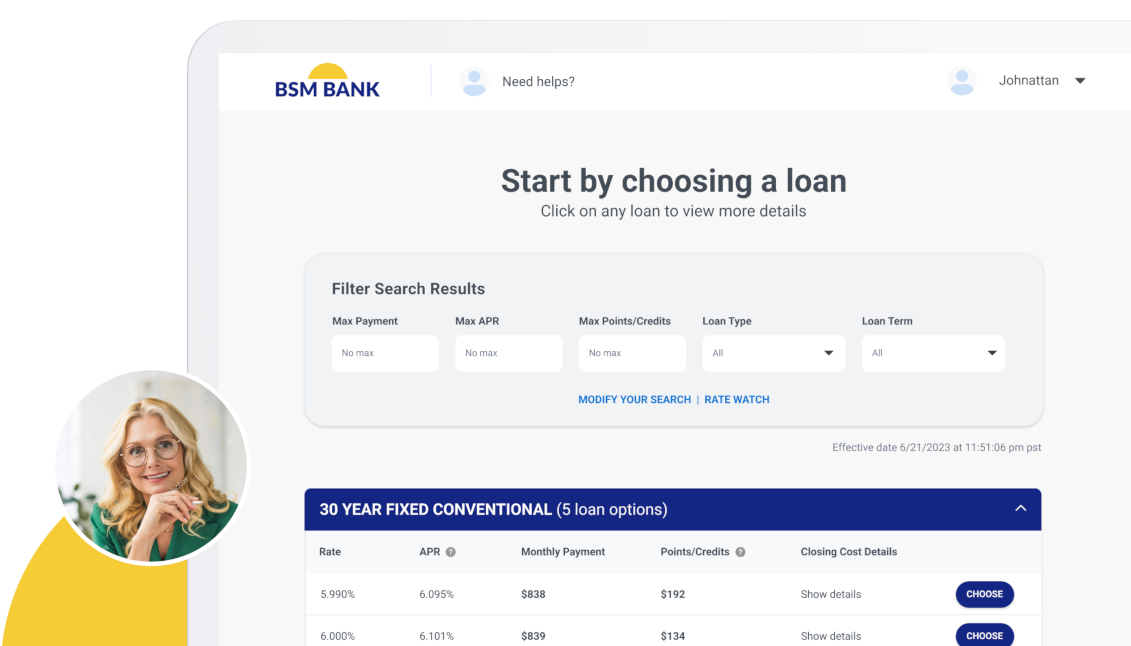The loan process is similar to a puzzle. Every piece comes together to make a whole. It’s difficult for English speakers to grasp and can be more complicated for Spanish-speakers to put together.
The 2018 U.S. Census Bureau estimated a Hispanic population of 59.8 million people, 38.9 million who speak Spanish and almost 9 million of those who didn’t speak English at all or that well. Why are these numbers important to U.S. lenders? Serving this demographic is a perfect opportunity for financial service industries looking to grow, especially in the mortgage market.
Connecting with Spanish-speaking borrowers is also important on a cultural level. The Latinx community has shown a preference for in-culture content more than any other demographic with 61 percent feeling an advertisement is targeted for them if it recognizes their cultural background. This type of targeting is how lenders need to work with a Spanish-speaking audience.
How Are Lenders Working With a Spanish-Speaking Audience?
A study conducted by the Urban Institute found that limited English proficiency (LEP) had a negative impact on homeownership numbers. Neighborhoods with a higher concentration of LEP individuals had homeownership rates 5 percentage points lower than those with a median concentration of LEP residents.
As the number of Spanish-speaking homeowners continues to grow, lenders are scrambling to improve access to the U.S. mortgage market to this underserved community. When a Spanish-speaking potential borrower walks through the door (physical or virtual), lenders need to work with the borrower to make sure they understand the loan transaction process, the terms of the loan, and what happens when a borrower fails to meet payment obligations. What procedures and policies do originators and other parties in lending have in place to assist Spanish-speaking borrowers?
The Federal Housing Finance Agency (FHFA) in their 2017 Scorecard for Fannie Mae, Freddie Mac and Common Securitization Solutions stated their requirements for the Enterprises to identify obstacles for LEP borrowers in accessing mortgage credit. The FHFA aims to review potential solutions and develop a multi-year plan for the Enterprises to improve access to mortgage credit for qualified LEP borrowers and participate in the mortgage lifecycle through multiple channels.
Here are a number of ways banks and lenders are working with LEP borrowers:
Identification of Language Needs
Per the Consumer Financial Protection Bureau (CFPB), servicers should identify non-English speaking borrowers in need of language assistance, provide non-English call options, have dedicated customer service representatives that speak the language and have the same training and level of authority as English-speaking representatives and have translated documents from English into other languages.
Financial institutions review demographic data from the areas where they serve to determine the language preference of their customer base. Larger, national branches focus more on a Spanish-speaking audience while regional branches coordinate language resources based on demographics.
Translation and Interpretation Systems
Larger providers have written and technological solutions for translation and verbal interpretation to help communicate consistency and accuracy between lender and borrower. Back-translation and translation for meaning instead of word-for-word are used to further validate third-party translations. Many financial institutions also use bilingual glossaries to keep terms consistent between languages.
Trained Staff and Contractors
Financial service providers that have language services use different methods to make sure staff and contractors have the language and cultural understanding to better aid Spanish-speaking borrowers. Some hire employees and require an internal or external certification of written and verbal language comprehension. The providers that use contractors reported having language expert staff on-hand for quality control.
According to the Mortgage Bankers Association’s (MBA) 2017 Legal Issues and Regulatory Compliance Conference, when lenders were asked about translation capability during the orgination process, almost 64 percent said they have in-house capability, 11 percent hire an outside vendor, and 25 percent do not have translation capability. Over 67 percent also stated that they refer LEP borrowers to housing counseling agencies for translation assistance.
Borrower-Lender Interaction
Lenders with language services use multiple channels of communication with their Spanish-speaking audience. From verbal interpretation over the phone to language setting on digital platforms and access points. Steps have been taken to improve access to LEP borrowers but many lenders reported having written contracts or agreements only available in English.
What Do Studies Tell Us About Spanish-Speaking Borrowers?
The number of Spanish-speaking millennial borrowers is steadily growing. The National Association of Hispanic Real Estate Professionals (NAHREP) released its 2019 State of Hispanic Homeownership Report with insights into the current trends of the Hispanic housing market. 2019 marked the fifth consecutive year of Hispanic homeownership gains, the only demographic with five consecutive years of growth. The rate of Hispanic homeownership increased by 47.5 percent in 2019 with 435,000 new households and 1.9 million over the past decade.
Subscribe to BeSmartee 's Digital Mortgage Blog to receive:
- Mortgage Industry Insights
- Security & Compliance Updates
- Q&A's Featuring Mortgage & Technology Experts
Participants in a study of Spanish-speaking borrowers found that the main theme was trust and building relationships. Spanish-speaking borrowers prefer to use documents in Spanish, they rely on relatives and trusted advisors and they want more verbal and written communication in their native language. As the second-largest ethnic group in the U.S., Latinx are becoming the borrower of the future. Why is the U.S. home mortgage market seeing so much growth in this demographic?
The Borrower of the Future
One main attribute is the growth in familiarity with the U.S. mortgage market as lenders have started to accommodate Spanish-speaking borrowers. According to a 2019 article in the Wall Street Journal, “Local and national lenders have courted a Hispanic clientele, who represent an appealing growth market as overall loan volume has slowed. Lenders have added Spanish-speaking loan officers and devoted additional resources to underwriting loans to borrowers who are self-employed or where multiple generations in a family are buying a home together.”
Studies have shown that Latinx homebuyers are younger than the national average and the fastest growing demographic with homeownership rates on a sustainable, upward trajectory. With more than 4.9 million mortgage-ready Hispanic millennials in the U.S in 2018, the outlook for continued growth in homeownership is looking good. The numbers show that the Hispanic and Spanish-speaking demographic have a huge purchasing power in the U.S. Serving this demographic is an important marketing potential for lenders.
Resources for Lenders
The continued growth of Spanish-speakers in the mortgage market means lenders will need more available resources to reach this clientele.
The Consumer Financial Protection Bureau, Freddie Mac and Fannie Mae provide resources for lenders working with Spanish-speaking borrowers. The FHFA joined with Freddie Mac and Frannie Mae to develop the Mortgage Translations clearinghouse. This is a collection of translated documents and tools for lenders, servicers, housing counselors and others to help LEP mortgage loan borrowers. Documents included are the Uniform Residential Loan Application (URLA), mortgage term glossaries, forbearance servicer scripts and the revised Mortgage Assistance Application.
Danny Gardner, the senior vice president of single-family affordable lending and access to credit at Freddie Mac, stated, “The materials included on this website will provide lenders, servicers, real estate professionals and housing counselors with tools to better assist, educate and engage LEP borrowers through the mortgage process.”
The CFPB released a glossary of English to Spanish financial terms and its 2017 Spotlight on Serving Limited English Proficient Consumers with research, tools, and resources for financial educators. The CFPB website has tools, worksheets, handouts and audio recordings by topic for lenders to help improve the financial literacy of consumers.
Technology in Spanish
Mortgage documents are already difficult to read in English for native English speakers, let alone LEP borrowers.
BeSmartee’s Spanish translation feature for its award-winning Mortgage Point-of-Sale (POS) platform lets lenders expand their business into Hispanic communities to help Spanish-speaking borrowers. By offering Hispanic borrowers the opportunity to communicate in Spanish, BeSmartee hopes to give lenders the chance to grow in this market.
Final Thoughts
Lenders are expanding offerings and support to better aid the LEP Hispanic mortgage market. Lenders need to meet the needs of borrowers through every part of the lending cycle without getting lost in translation. By confronting consumer obstacles as well as the challenges that lenders face when interacting with Spanish-speaking borrowers, the CFPB hopes to assist LEP individuals to increase access to credit.
In an increasingly diverse and multicultural nation, providing equal access to credit services to LEP borrowers isn’t easy. As the number of creditworthy Spanish-speaking borrowers continues to grow, are lenders prepared to break through barriers to serve their LEP clientele?
For more information on BeSmartee’s Spanish translation feature, contact us at (888) 276-1579 or email our mortgage technology experts at sales@besmartee.com.




